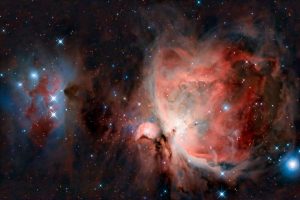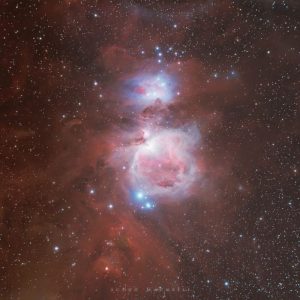-
The Orion Nebula (the nearest star-forming region to earth) is captured in photos by The James Webb Space Telescope.
-
The Nebula lies about 1,350 light years from earth and contains hundreds of scorching stars
-
It reminds us of where our solar system formed more than 4.5 billion years ago
The pictures, released on Monday, provided new insight to help our space scientists to better understand what happened during the first million years ago of the Milky way’s planetary evolution. Orion Nebula travels through cosmic filaments (the wall of dense gas and dust) and appears to be a massive winged creature with a blazing shining star.
It has been seen for the first time in history, which amazed astronomers when the James Webb Space Telescope captured the Orion Nebulas. Hence, more than 100 scientists from 18 countries, including the French National Center for Scientific Research (CNRS), the University of Michigan, and Western University in Canada, worked together to obtain the photographs.
Astrophysicist Els Peeters of Western University stated, “We are blown away by the breathtaking images of the Orion Nebula.” Moreover, she also said that “These new observations allow us to better understand how massive stars transform the gas and dust cloud in which they are born.”
Though, the latest infrared technology Webb helps to penetrate the dust which makes a vision clear for astronomers to detect Nebulas. But still, it was challenging for astronomers to detect the Orion Nebula with a telescope that uses visible lights such as the Hubble Space Telescope; Webb’s predecessors as significant levels of dust make it challenging to observe the Nebula. 
Whereas it revealed a variety of spectacular formations, down to the size of our solar system, or 40 astronomical units. These incorporate creating a stellar system with central proto-stars surrounded by a disc of gas and dust, where planets form and thick filaments of material that could give rise to later stellar generations.
“We hope to understand the entire cycle of star birth,” stated Edwin Bergin, chair of astronomy at the University of Michigan and a member of a worldwide research team. He also stated that “We are observing this cycle to look at where the first generation of stars is essentially irradiating the material for the next generation.
The incredible structures we observe will detail how the feedback cycle of stellar birth occurs in our galaxy and beyond.” The most powerful space telescope ever built, Webb is the latest technology which has a primary mirror with a diameter of 6.5 meters which is more than 21 feet, and is made up of 18 hexagonal, gold-coated segments. Not only this, it also features a five-layer sunshield the size of a tennis court.
Read more:
NASA Is All Set To Launch Its Moon Rocket For The Second Time
NASA’s Spacecraft ‘Right on Track’ to Crashing an Asteroid for Testing of its Planetary Defense Systems
The post Orion Nebula Has Captured For the First Time by the James Webb Space Telescope appeared first on TechJuice.
from TechJuice https://ift.tt/NECvAnl





0 Comments